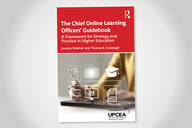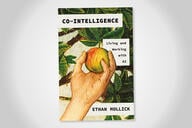You have /5 articles left.
Sign up for a free account or log in.
Last week, the front-page headline in our local newspaper read “Pick-Your-Own Apples in Short Supply Following Late May Frost.”
The article describes this past April as one of the warmest on records in New Hampshire, but then how, on May 17, “a different kind of record was shattered.” On that evening, temperatures dipped down to 23 degrees. The freeze destroyed apple crops across the Upper Valley of New Hampshire and Vermont.
This late-May freeze adds to the woes of our local orchards, as they have also been dealing with severe flooding and heavy rainfall through the summer. The article ends with a local grower describing what orchards and farms have been facing, weather-wise, commenting that “climate change is hitting us from all angles.”
Apple picking has been a tradition with my family since we moved to this college town in 2006. Not being able to pick our own seems almost unimaginable.
The story of my local orchards has some things to teach us, I think, about the future of colleges.
While higher education is far more resilient than other industries (especially agriculture), this does not mean that climate weirdness will not also hit us from all angles.
Like apple orchards, the risk that our colleges and universities face from climate change is not one thing—but many things. As the weather gets weirder and the extremes become more extreme, some of the climate-related events our campuses are facing include:
- Heavy precipitation: As the oceans warm, the amount of water that evaporates into the air increases. Storm systems form when moisture-laden air moves over land and converges. The result is heavy rain and snow. This summer, the rain where I live has been wild. How will a future of rain bombs and blizzards impact campus infrastructure, student life and university work?
- Flooding: This June, heavy rain caused flash flooding across many towns in the region. While my college town did not see major flooding, it is not hard to imagine campuses across the country being inundated with water. (See the Preparing for Floods at Institutions of Higher Education Fact Sheet.)
- Bad air quality: Poor air quality caused by wildfires may no longer be an anomaly. This summer, the air got bad due to fires in Canada. In the years ahead, who knows where the fires will burn and what will happen to the air? Universities are inside/out places. We have campuses where getting anywhere requires going outside. Will a rise in poor air quality days push universities to offer more classes online? Will faculty and staff offices further empty out because it is safer to work from home?
- Droughts: Extreme weather means both too much and too little water. As rivers run dry and aquifers are depleted, how many universities will be left with inadequate supplies of water?
- Heat: See my review of Jeff Goodell’s excellent new book, The Heat Will Kill You First, for some higher ed–centric thoughts.
- Hurricanes: I don’t worry too much about hurricanes up here in the Upper Valley, but likely almost every other university leader should. The impact of Hurricane Ian on Florida’s colleges makes for harrowing reading.
What should higher education leaders do now to prepare for the climate crisis?
Can we learn from what we see all around us—including in our local apple orchards—and decide to do something different?
The place to start is to buy, read and discuss Bryan Alexander’s Universities on Fire.
That book provides a framework for planning campus climate resiliency efforts and ideas for how universities can actively participate in the fight against climate change.
The disappearance of pick-your-own this summer underlines the fact that the effects of climate change are no longer theoretical.
Climate change will bring frequent extreme weather-related incidents to our campuses. I hope we are ready to cope.
For this summer, I’ll miss the apples.




